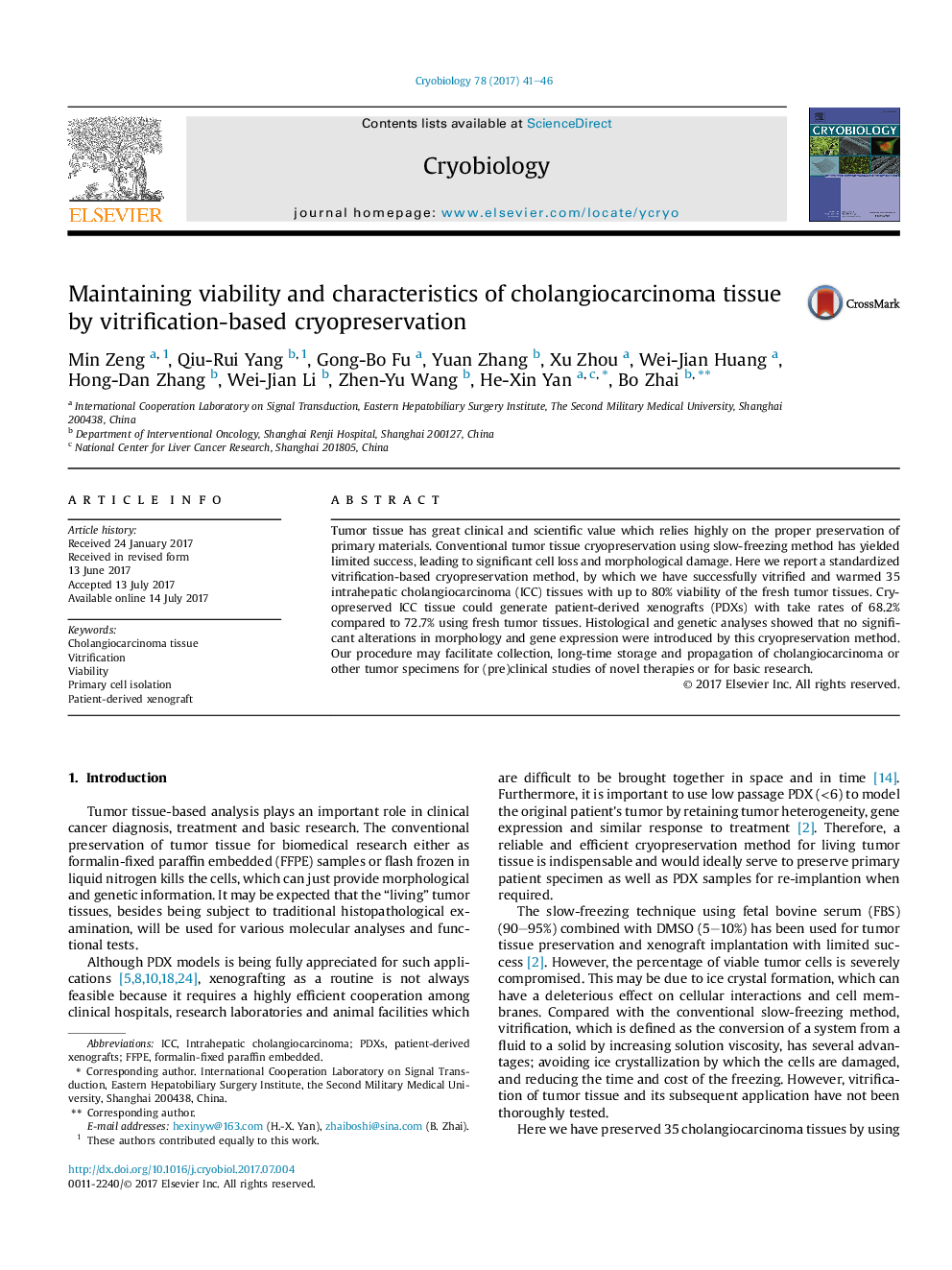| Article ID | Journal | Published Year | Pages | File Type |
|---|---|---|---|---|
| 5530870 | Cryobiology | 2017 | 6 Pages |
â¢35 intrahepatic cholangiocarcinoma tissue slices have been vitrified successfully.â¢The viability of vitrified-rewarmed ICC tissues was up to 80% of the fresh tissues.â¢No significant alterations in morphology and gene expression were introduced.â¢Primary tumor cells could be isolated from the rewarmed tissues.â¢Cryopreserved ICC tissues could generate PDXs with take rate of 68.2%.
Tumor tissue has great clinical and scientific value which relies highly on the proper preservation of primary materials. Conventional tumor tissue cryopreservation using slow-freezing method has yielded limited success, leading to significant cell loss and morphological damage. Here we report a standardized vitrification-based cryopreservation method, by which we have successfully vitrified and warmed 35 intrahepatic cholangiocarcinoma (ICC) tissues with up to 80% viability of the fresh tumor tissues. Cryopreserved ICC tissue could generate patient-derived xenografts (PDXs) with take rates of 68.2% compared to 72.7% using fresh tumor tissues. Histological and genetic analyses showed that no significant alterations in morphology and gene expression were introduced by this cryopreservation method. Our procedure may facilitate collection, long-time storage and propagation of cholangiocarcinoma or other tumor specimens for (pre)clinical studies of novel therapies or for basic research.
